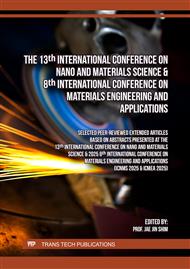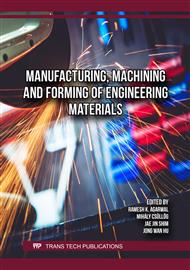p.67
p.75
p.81
p.93
p.103
p.111
p.117
p.123
p.129
Investigation of Optimal Ratios of EPS Foam Waste and Solvents as Alternative Green Polymer-Based Additives for Enhancing Cement Properties
Abstract:
This study explores the use of expanded polystyrene (EPS) waste as a sustainable additive to enhance the thermal and water resistance properties of ordinary Portland cement (OPC) paste. By dissolving EPS foam waste in acetone and toluene to create an EPS glue, various solvent ratios were tested to determine optimal formulations for improving cement properties. The results indicated that an acetone-to-toluene (A:T) ratio of 50:50 and an EPS-to-solvent (EPS:S) ratio of 1:1.5 provided the best balance of flowability, compressive strength, thermal conductivity, and water permeability. Specifically, a 5% replacement of OPC with EPS glue reduced thermal conductivity by approximately 36.8% and improved water penetration resistance by 38.8%, demonstrating that EPS glue is an effective and eco-friendly additive for cement. This research contributes to sustainable building practices by repurposing EPS waste and enhancing the performance of cement in construction applications.
Info:
Periodical:
Pages:
123-128
Citation:
Online since:
June 2025
Price:
Сopyright:
© 2025 Trans Tech Publications Ltd. All Rights Reserved
Share:
Citation:



